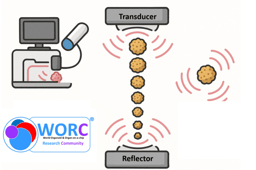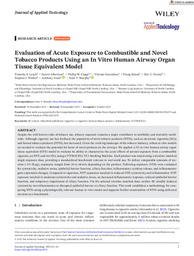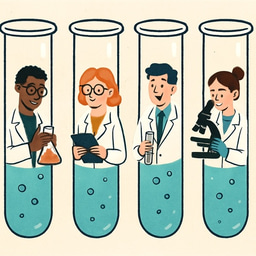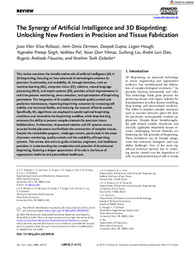WORD+25 Xmas Meet-Up: Prof. Knight and Prof. Screen Introduction!

Professors Martin Knight and Hazel Screen, internationally recognised leaders in mechanobiology and pioneers in advanced organ-on-a-chip systems at Queen Mary University of London’s Centre for Predictive In Vitro Models (CPM), will be speaking at the WORD25 Xmas Meet-Up (https://www.worc-events.com/word25-xmas-meet-up). As Co-Directors of CPM, they have built a research environment bridging engineering, biology, and medicine to create in vitro models that accurately emulate human physiology. Their work integrates biomechanical, biochemical, and structural cues into engineered microenvironments, enabling the study of disease mechanisms and therapeutic interventions beyond the scope of conventional cell culture or animal models.
Their recent collaborative publications exemplify this approach. In their paper “Human vascularised synovium-on-a-chip: a mechanically stimulated, microfluidic model to investigate synovial inflammation and monocyte recruitment” (DOI: https://doi.org/10.1088/1748-605X/acf976), Knight, Screen, and colleagues created an advanced microphysiological model of the human synovial membrane. By combining a perfused vascular channel with a mechanically stimulated synovial compartment, the team successfully reproduced key features of joint inflammation. When challenged with pro-inflammatory cytokines, the chip exhibited increased secretion of inflammatory mediators and promoted the recruitment of monocytes, mirroring processes seen in arthritic disease. This work demonstrates the potential to replace or reduce the need for animal studies in arthritis research, offering a platform that is both more human-relevant and more experimentally controllable.
This commitment to understanding how mechanical forces shape cellular function is also evident in their study of endothelial mechanobiology. In their work “Pulsatile low shear stress increases susceptibility to endothelial inflammation via upregulation of IFT and activation of YAP” (DOI: https://doi.org/10.1063/5.0263936), they engineered a microfluidic system to mimic the haemodynamic environment of coronary arteries. The team discovered that low shear stress, which typically occurs in vessel regions prone to atherosclerosis, enhances the susceptibility of endothelial cells to inflammation. Crucially, they identified that this heightened sensitivity is mediated through upregulation of intraflagellar transport proteins and activation of the transcriptional regulator YAP. Together, these pathways modulate primary cilia structure and mechanosensation, revealing an elegant mechanism by which vascular cells interpret mechanical cues. This mechanistic insight has far-reaching implications for cardiovascular disease, offering potential new angles for therapeutic intervention.
Their third recent collaboration focuses on biochemical microenvironments. In their study “Engineering growth factor gradients to drive spatiotemporal tissue patterning in organ-on-a-chip systems” (DOI: https://doi.org/10.1177/20417314251326256), the team developed innovative methods to generate stable spatial patterns of morphogens such as BMP-2. By integrating these gradients into hydrogels housed within different chip architectures, they recreated the natural cues that guide tissue development. Mesenchymal stem cells exposed to these gradients differentiated in a spatially organised manner that strikingly resembled endochondral ossification, the developmental process through which bone forms from cartilage. This ability to spatially pattern tissues within a chip represents a significant advance for developmental biology, regenerative medicine, and disease modelling, enabling researchers to simulate complex tissue transitions in a controlled and reproducible way.
Together, these papers illustrate the breadth and depth of the collaborative work between Professors Knight and Screen. Their research unifies mechanical and biochemical engineering with cell biology to produce models that behave more like human tissues-dynamic, responsive, and intricately regulated. Under their leadership, the Centre for Predictive In Vitro Models has become a hub for innovation in microphysiological systems, positioning organ-on-a-chip technology as a foundational tool for future biomedical research, therapeutic discovery, and regulatory science.





Please sign in or register for FREE
If you are a registered user on WORC.Community, please sign in